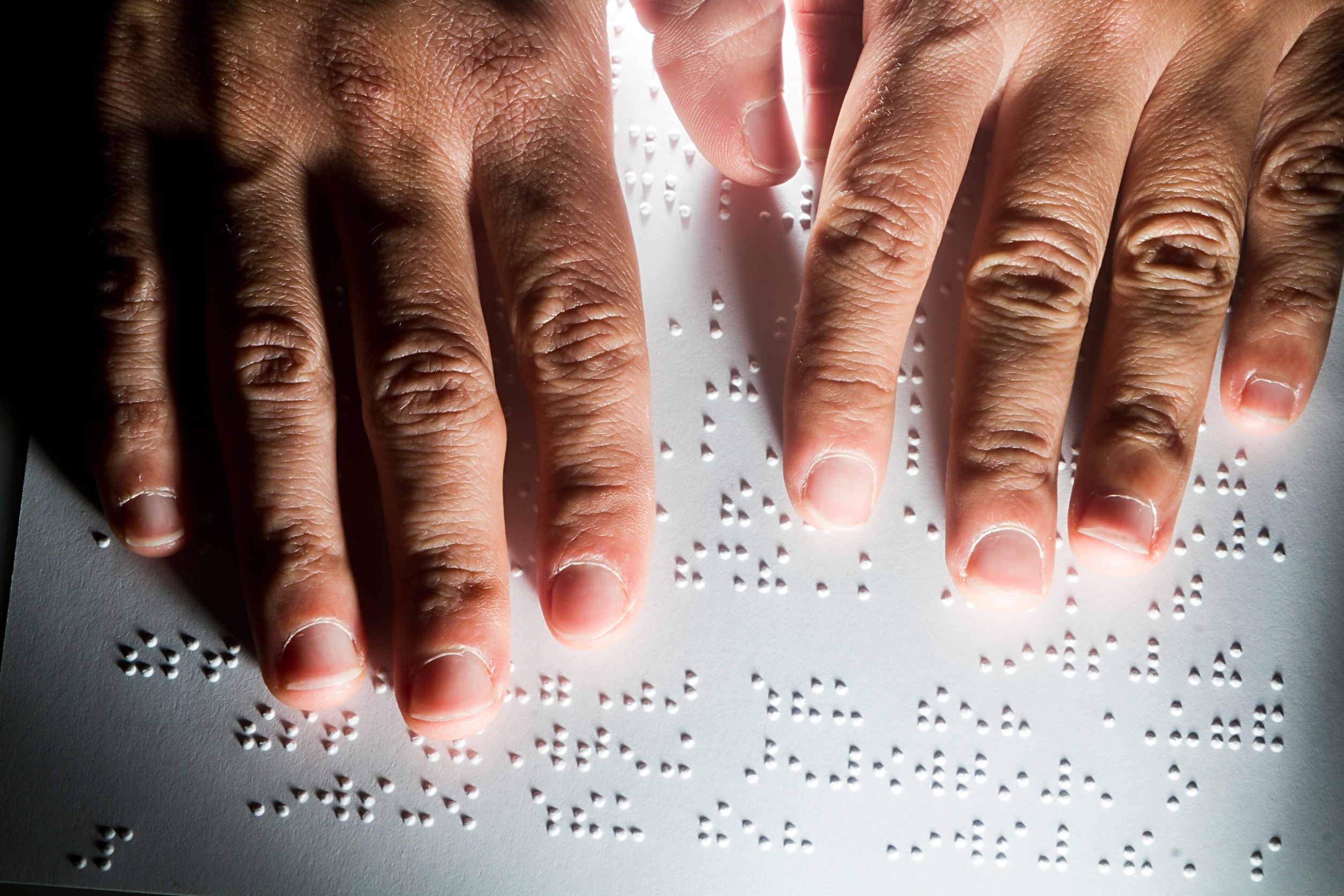
What Is Universal Design & How Can ADA Signage Help?
Take one look around, and you’ll start to see that, in a way, we’re just a bunch of people reacting to and interacting with the environment built around us – sometimes with intent, and other times out of habit.
And that’s true for all 8.2 billion of us in existence today.
While most of us navigate public spaces with ease, others find it more difficult due to certain barriers and restrictions impeding their ability to live a happy, healthy, normal and rewarding day-to-day lifestyle.
In fact, that’s true for just about every individual living with a disability.
According to the World Health Organization (WHO), an estimated 1.3 billion people experience significant disability in the world today – which amounts to more than 16% of the general population, or 1 in 6 of us.
And each and every one of them can benefit from universal design.

Universal Design: Our Ticket to a More Inclusive Environment
One of the biggest issues disabled people face is that most interior environments are designed with the able-bodied in mind, but they often don’t accommodate for the disabled – even in the most basic of ways.
That’s where universal design comes into play.
Universal design is a concept that aims to create environments and products that are accessible and usable by people of all abilities, ages, and backgrounds – ensuring equal and fair opportunity for all.
The term was coined by architect Ron Mace back in 1985.
“Universal design is design that’s usable by all people, to the greatest extent possible, without the need for adaptation or specialized design,” Mace explained nearly 40 years ago, according to the UD Project.
The 7 Guiding Principles of Universal Design
In 1997, a team of architects, product designers, engineers, and environmental design researchers at the Center for Universal Design at North Carolina State University expanded upon Mace’s revolutionary idea.
The group detailed what they described as the ‘seven guiding principles of universal design.’
The Center is no longer operational, but the seven universal design principles it created have withstood the test of time – inspiring a wide range of policies, laws, international agreements, and design across the world.

Let’s take a look at what those principles are and why they’re so important.
1. Equitable Use
Products and environments are designed in a way that’s useful and marketable to people with varying abilities by providing equivalent means of use for various users when identical means aren’t possible.
Automatic sliding doors are a great example of equitable use. It doesn’t matter if you’re walking on both legs, in a wheelchair, on crutches, or unable to comprehend how doors work – the door opens regardless.
2. Flexibility In Use
A flexible design is one that accommodates a range of individual preferences and abilities, provides choice in method of use, adapts to the user’s pace, and accommodates left- and right-handed access.
Closed captioning and assistive technology are good examples of this – giving users the choice between listening and reading what they’re watching. Another example would be scissors designed for left-handed people.
3. Simple & Intuitive Use
In order for universal design to truly be all-inclusive, it needs to be easy to understand and even easier to use – regardless of the user's experience, knowledge, language skills, or current concentration level.
To achieve this, we must eliminate any and all complexity (if possible), be consistent and honest with user expectations and intuition, and be prepared to accommodate a wide range of literacy, language skills, and learning environments.
4. Perceptible Information
The fourth guiding principle to barrier-free design is to ensure the necessary information is communicated to the user in an effective manner – regardless of ambient conditions or the individual’s sensory abilities.
A good example of this is ADA signs that utilize a combination of pictures, symbols, tactile letters, and braille. Some businesses and public spaces take this a step further and offer an auditory aspect to it.

5. Tolerance for Error
Universal design prioritizes a tolerance for error by minimizing hazards, providing warnings for any such hazards, and accounting (or preparing) for any consequences that may come from accidental actions.
To achieve this, designers are encouraged to provide fail-safe features that reduce the chances of error. A good example of this in motion is a double-sided car key that works no matter what way it’s inserted.
6. Low Physical Effort
According to Mace, we need to prioritize products, environments, and designs that can be used efficiently, comfortably, reasonably, with a low amount of physical effort, and with as little fatigue as possible.
Take your kitchen sink for example. While most kitchen sinks used to feature a knob, we eventually upgraded to a lever – which was much easier to use. And now, we have touch-activated sink features.
7. Appropriate Size & Space
The final guiding principle to universal design is ensuring the appropriate size and space is provided for approach, reach, manipulation, and use – regardless of someone’s body size, posture, and/or mobility.
For example, ADA signs need to be large enough – and installed at an appropriate level – so people of varying vision impairments can read them clearly. They should also be easy to spot and not hidden.
Universal Design, ADA Signage, & Inclusive Environments
The rise of universal design helped influence a new wave of thinking that prioritized inclusivity, equality, and accessibility in ways the world had never seen before – a wave of thinking that’s still evolving today.
In fact, universal design paved the way for the Americans with Disabilities Act (ADA).
The ADA is a federal civil rights law that prohibits discrimination on the basis of disability – just as other civil rights laws prohibit discrimination on the basis of race, color, sex, national origin, age, and religion.
It was signed into law in 1990 by then-President George H.W. Bush.
In the 35 years since, the ADA has maintained a strict set of UDL guidelines, regulations, requirements, and standards to ensure public spaces are tailored to disabled people in the same way they’re tailored to everyone else.
One of the biggest ways they achieve this is with ADA signs.
ADA signs are signs that provide information in a way that is physically accessible and usable by everyone, including those with visual impairments, mobility issues, cognitive limitations, and other disabilities.

Shop Custom ADA Signs at ADA Central
Are you looking to give your existing ADA signs a fresh new look? Are you worried that your business isn’t complying with ADA requirements and standards? Are you just now learning what the ADA stands for?
If you answered ‘yes’ to any of those questions, then you’ve come to the right place.
First and foremost, it’s important that every business owner understands what ADA signs are, why they’re important, and where they’re needed. Any failure to understand could result in a lawsuit, fine, or penalty.
Let’s not forget – ADA signs aren’t just encouraged.
They’re required by federal law.
Don’t worry – ADA Central is your go-to source for quality ADA signs. Feel free to shop our pre-made designs online or contact us today to begin a custom order tailored to you and your business’s needs.

